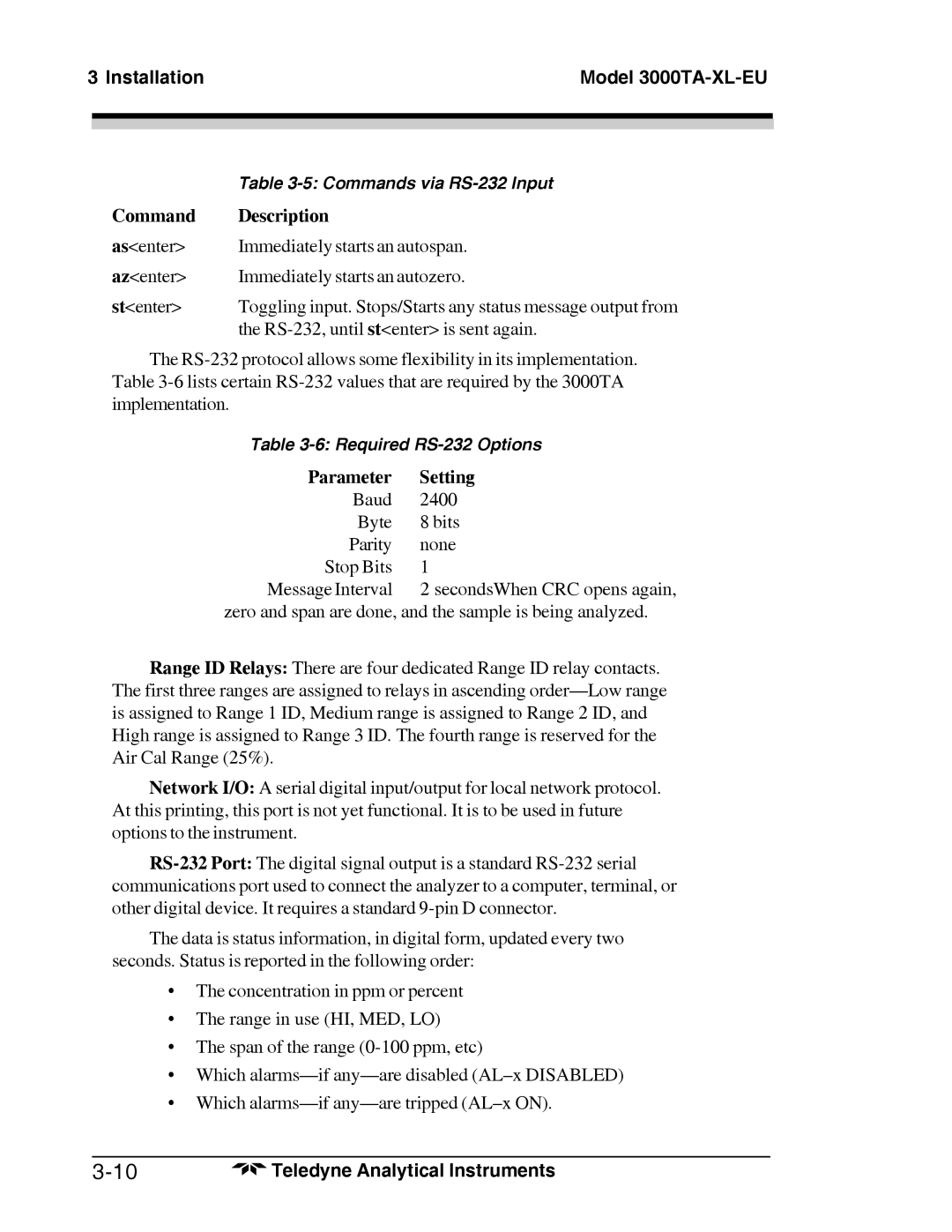3 Installation | Model | |
|
|
|
|
|
|
|
|
|
| Table |
Command | Description |
as<enter> | Immediately starts an autospan. |
az<enter> | Immediately starts an autozero. |
st<enter> | Toggling input. Stops/Starts any status message output from |
| the |
The
Table
Parameter | Setting |
Baud | 2400 |
Byte | 8 bits |
Parity | none |
Stop Bits | 1 |
Message Interval | 2 secondsWhen CRC opens again, |
zero and span are done, and the sample is being analyzed.
Range ID Relays: There are four dedicated Range ID relay contacts. The first three ranges are assigned to relays in ascending
Network I/O: A serial digital input/output for local network protocol. At this printing, this port is not yet functional. It is to be used in future options to the instrument.
The data is status information, in digital form, updated every two seconds. Status is reported in the following order:
•The concentration in ppm or percent
•The range in use (HI, MED, LO)
•The span of the range
•Which
•Which
Teledyne Analytical Instruments |
